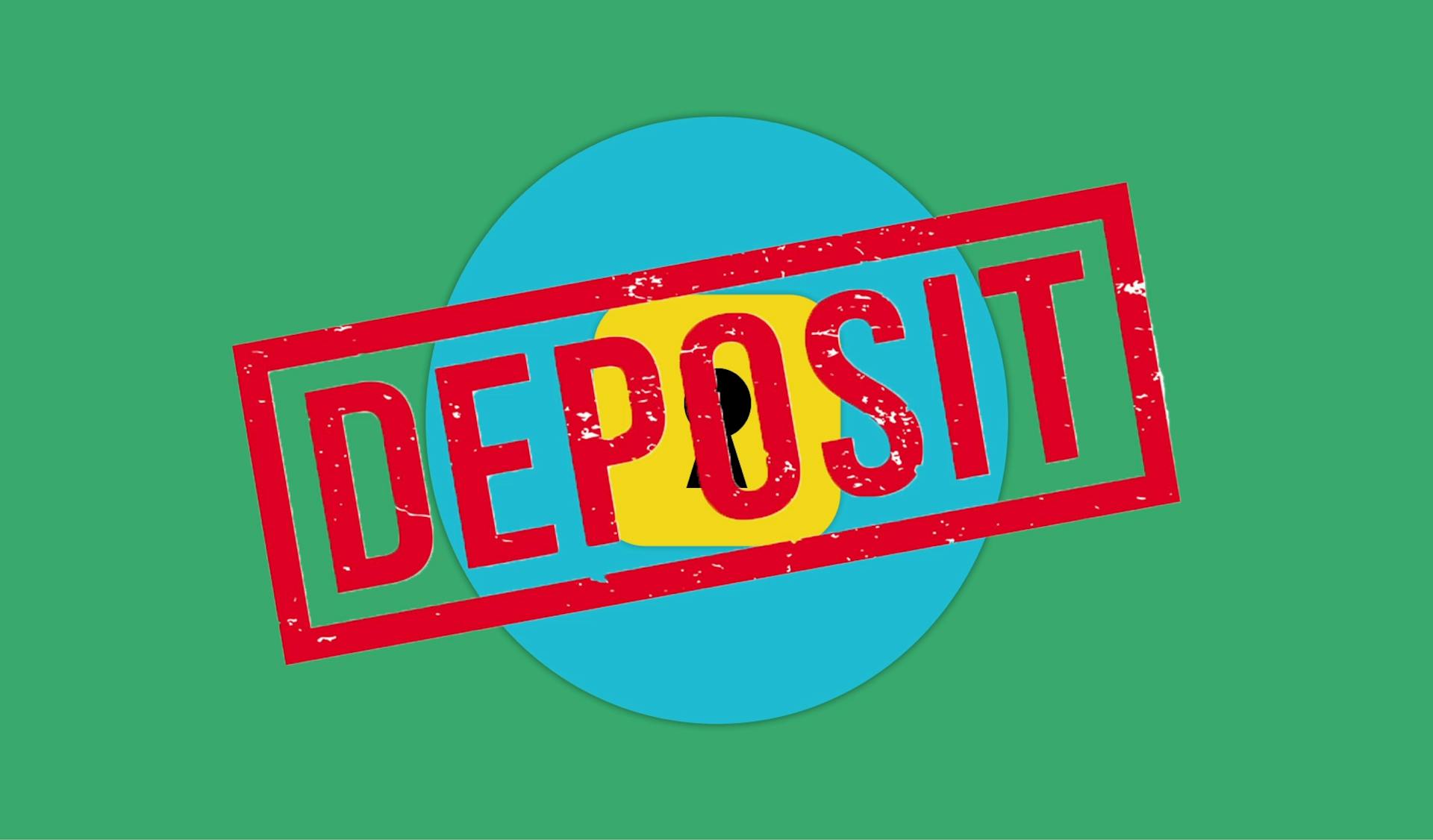
Calculating an amortizing loan payment can seem daunting, but it's actually quite straightforward. The formula involves several key variables, including the loan amount, interest rate, and loan term.
The loan amount is the initial amount borrowed, which will be paid off over the loan term. For example, if you borrow $20,000 to buy a car, the loan amount is $20,000.
To calculate the monthly payment, you'll need to know the interest rate, which is the cost of borrowing the money. If your loan has an annual interest rate of 6%, the monthly interest rate would be 0.5%.
The loan term is the length of time you have to repay the loan, usually expressed in years. For instance, a 5-year car loan would have a loan term of 60 months.
On a similar theme: Short Term Loan Lenders
What Is
Amortization is the process of paying off a loan by making regular payments that cover both interest and principal.
A fixed-rate mortgage repays the loan in equal installments, but the amount that goes towards the principal and the amount that goes towards interest will differ each time you make a payment.
Each month, your mortgage payment goes towards paying off the amount you borrowed, plus interest, in addition to homeowners insurance and property taxes.
With a longer amortization period, your monthly payment will be lower, since there’s more time to repay.
The downside is that you’ll spend more on interest and will need more time to reduce the principal balance, so you will build equity in your home more slowly.
Amortization isn’t just used for mortgages — personal loans and auto loans are other common amortizing loans.
The amount of interest you pay on the borrowed money, or principal, changes as you pay back the money.
The less principal you still owe, the smaller your interest is going to end up being.
A fresh viewpoint: Amortization Tables for Car Loans
Calculating Amortizing Loan Payments
Calculating amortizing loan payments can be a bit tricky, but don't worry, it's easier than you think. The formula for calculating the payment of an amortizing loan is complex, but fortunately, Excel has a handy PMT function that we can use instead.
To use the PMT function, we need to input three required arguments: rate (the interest rate of the loan), nper (the total number of payments for the loan), and pv (the loan amount). This is where things can get a bit confusing, so let's break it down.
For example, if we have a loan with an annual interest rate of 7 percent and a one-year (12-month) term, we would enter that into the PMT function as =PMT(.07/12,12,-100000), resulting in $8,652.67.
The PMT function will automatically output the result as a negative number unless we make the loan amount negative or enter the entire function with a “minus” sign in front of it. This is because the loan amount is typically a negative number, representing the amount borrowed.
Here's a quick rundown of the PMT function syntax:
In the case of a monthly payment schedule, we need to make sure we convert any annual numbers to monthly. This means dividing the annual interest rate by 12 and multiplying the number of years by 12 to calculate the monthly payment properly.
Readers also liked: Interest Rate Annual Percentage Yield
Understanding Amortizing Loan Schedules
An amortizing loan schedule is a table that lists each monthly payment from the start of the loan until it's paid off, detailing how much goes toward principal or interest at various times.
Each monthly payment is the same, but the interest part decreases over time as more of the principal part is paid.
A mortgage amortization schedule is essentially a plan for paying off your loan, showing how your payments will be allocated between interest and principal over the loan term.
The loan is fully repaid by the end of the schedule, and this can be seen in a simple 12-month loan amortization schedule in a downloadable template.
Recommended read: Negative Amortization Mortgage Loans
What Is a Schedule?
A mortgage amortization schedule is a table that lists each monthly payment from the time you start repaying the loan until the loan matures, or is paid off.
This schedule details how much will go toward each component of your mortgage payment — principal or interest — at various times throughout the loan term.
Creating the Schedule
You can create a loan amortization schedule in a dynamic Excel spreadsheet, which is more efficient than hardcoding numbers into individual cells.
A mortgage amortization schedule is a table that lists each monthly payment from the start of the loan until it's fully repaid.
To create the schedule, you can use a downloadable template or start from scratch. The template will have a worksheet labeled Fixed Schedule, which shows a simple 12-month loan amortization schedule.
Each monthly payment is the same, and the interest part decreases over time as more of the principal part is paid.
You can also use the PPMT function to calculate the principal paydown amount. The PPMT syntax is =PPMT(rate, per, nper, pv, [fv], [type]), where rate is the interest rate, per is the period, nper is the total number of payment periods, and pv is the loan amount.
For example, if you want to find the principal amount in the first month of a $100,000 loan with an annual interest rate of 7 percent, you would enter =PPMT(.07/12,1,12,-100000) into the PPMT function.
Related reading: 12 Month Introductory Rate Heloc
Here's a breakdown of the required arguments for the PPMT function:
- Rate: Interest rate (e.g., .07/12 for 7 percent annual interest rate)
- Per: Period for which you want to find the principal portion (e.g., 1 for the first month)
- Nper: Total number of payment periods (e.g., 12 for a 12-month loan)
- Pv: Loan amount (e.g., -100000 for a $100,000 loan)
By using the PPMT function, you can easily calculate the principal paydown amount for each month of the loan.
Calculators and Tools
Loan calculators can be a big help when understanding amortizing loan payments. They can perform various tasks such as basic calculations, amortization, and even compare different loan options.
A basic calculator is a great place to start, but there are many other types of calculators available. For example, you can use a biweekly calculator to see how making payments every two weeks can impact your loan. Or, you can use a bad credit calculator to see how a lower credit score might affect your interest rate.
Some common types of loan calculators include:
- Basic Calculator
- Amortization
- Biweekly
- Compare Loans
- Personal
- Bad Credit
- Remaining Balance
- Missing Variable
- Credit Qualification
- Principal vs Interest
- Interest Only
By using these calculators, you can get a better understanding of how different loan options work and make more informed decisions.
Calculators
Calculators are a vital tool for making informed financial decisions. They can help you crunch numbers and understand complex financial concepts.
A basic loan calculator is a great place to start, allowing you to input variables such as loan amount and interest rate to get an estimated monthly payment.
You can use an amortization calculator to see how your loan payments are allocated between interest and principal over time.
Some calculators, like the biweekly calculator, can even help you figure out how to make payments more frequently to pay off your loan faster.
If you're considering multiple loan options, a compare loans calculator can help you weigh the pros and cons of each.
A personal loan calculator can give you a sense of what your monthly payments might look like for a personal loan.
If you have bad credit, a bad credit loan calculator can help you understand how your credit score affects your loan options.
A remaining balance calculator can help you determine how much of your loan balance is still outstanding.
A missing variable calculator can help you solve for unknown values in a loan equation.
A credit qualification calculator can give you an idea of how much you might be eligible to borrow based on your credit score.
An interest only calculator can help you see how much of your payment goes towards interest versus principal.
On a similar theme: Cash Advance Options
Variable Period Calculator
The Variable Period Calculator is a powerful tool that allows you to create a dynamic loan amortization schedule. It's especially useful for longer-term loans that span multiple years.
To set up a Variable Period Calculator, you can use Excel's Conditional Formatting feature to hide periods that are not in use. For example, if you're creating a 30-year amortization schedule but only want to calculate a 2-year period, you can use Conditional Formatting to hide the 28 years you don't need.
The ampersand (&) symbol in Excel can be used to create a dynamic header that updates automatically when you change the loan term. This is equivalent to using the CONCAT function.
By using Conditional Formatting, you can also modify calculations to return a blank cell if the specific month number is greater than the total number of months. This can be done using an IF statement, such as the one shown in the example: =IF(B16<=$C$8,IPMT($C$6,B16,$C$8,-$C$4)",").
If this caught your attention, see: Is Venmo Safe to Use with Strangers
Here are some common types of loan calculations that can be performed using a Variable Period Calculator:
- Amortization
- Biweekly
- Compare Loans
- Personal
- Bad Credit
- Remaining Balance
- Missing Variable
- Credit Qualification
- Principal vs Interest
- Interest Only
By using a Variable Period Calculator, you can create a flexible and dynamic loan amortization schedule that meets your specific needs. This can be especially useful for complex financial calculations or for creating custom loan schedules.
Optimizing Amortizing Loan Repayment
You can accelerate repayment with loan amortization, but it's not just about making the same payment every month for decades. Loan amortization allows you to save money and pay off your loan faster.
Refinancing your loan can be a way to accelerate amortization, but it's not a straightforward solution. You'll need to refinance your loan to a shorter-term, such as 20 or 15 years, which increases your monthly payment.
Refinancing isn't free, you'll have to pay a small percentage of the principal you have left, plus several fees that depend on the state and lender. These fees can add up quickly.
Additional reading: Can You Get in Trouble for Not Paying Medical Bills
You'll need to consider whether the savings you'll get from refinancing will be more than the amount you have to pay to refinance. No-cost refinancing might not be the best solution if you're trying to get your loan paid off faster and save money.
Refinancing at the right time can get you a lower interest rate, saving you money both by reducing your interest rate and paying off your loan faster.
You might like: Streamline Refinancing
Interest and Principal
The interest and principal portions of your loan payment are two distinct amounts that work together to pay off your loan. The interest portion is the amount of interest charged on the loan for the current month, which is calculated as $583.33 in our example.
To calculate the principal portion, you can use the difference between the total payment amount and the interest payment, which is $8,069.34 in the first month. Alternatively, you can use the PPMT function in a spreadsheet, which requires four arguments: rate, per, nper, and pv.
You might like: The Debt Snowball Method Involves . . .
Assuming a loan amount of $100,000 and an annual interest rate of 7 percent, the PPMT function can be used to calculate the principal amount in the first month as $8,069.34. If you want to find the principal portion in the second month, the PPMT function would return $8,116.41.
The total monthly payment is the sum of the interest and principal portions, which is $8,652.67 in our example. You can verify this by adding the interest and principal portions calculated earlier.
Here's a quick summary of the PPMT function arguments:
- Rate: Interest rate.
- Per: Period for which we want to find the principal portion.
- Nper: Total number of payment periods.
- Pv: Loan amount.
Frequently Asked Questions
How to calculate total interest paid on an amortized loan?
To calculate total interest paid on an amortized loan, divide your annual interest rate by the number of payments made in a year, then multiply by the total number of payments. This formula helps you understand the interest burden of your loan over time.
How to calculate amortised cost of a loan?
To calculate amortised cost of a loan, start with the initial recognition amount and subtract any principal repayments, then add or subtract the cumulative amortisation of the difference between the initial and maturity amounts, plus any fees or transaction costs. This calculation helps determine the loan's amortised cost over time.
Sources
- https://en.wikipedia.org/wiki/Amortizing_loan
- https://math.libretexts.org/Courses/Las_Positas_College/Math_for_Liberal_Arts/08%3A_Consumer_Mathematics/8.05%3A_Amortized_Loans
- https://www.bankrate.com/mortgages/amortization-calculator/
- https://www.calculators.org/loan/amortization.php
- https://corporatefinanceinstitute.com/resources/commercial-lending/amortization-calculator-excel/
Featured Images: pexels.com


